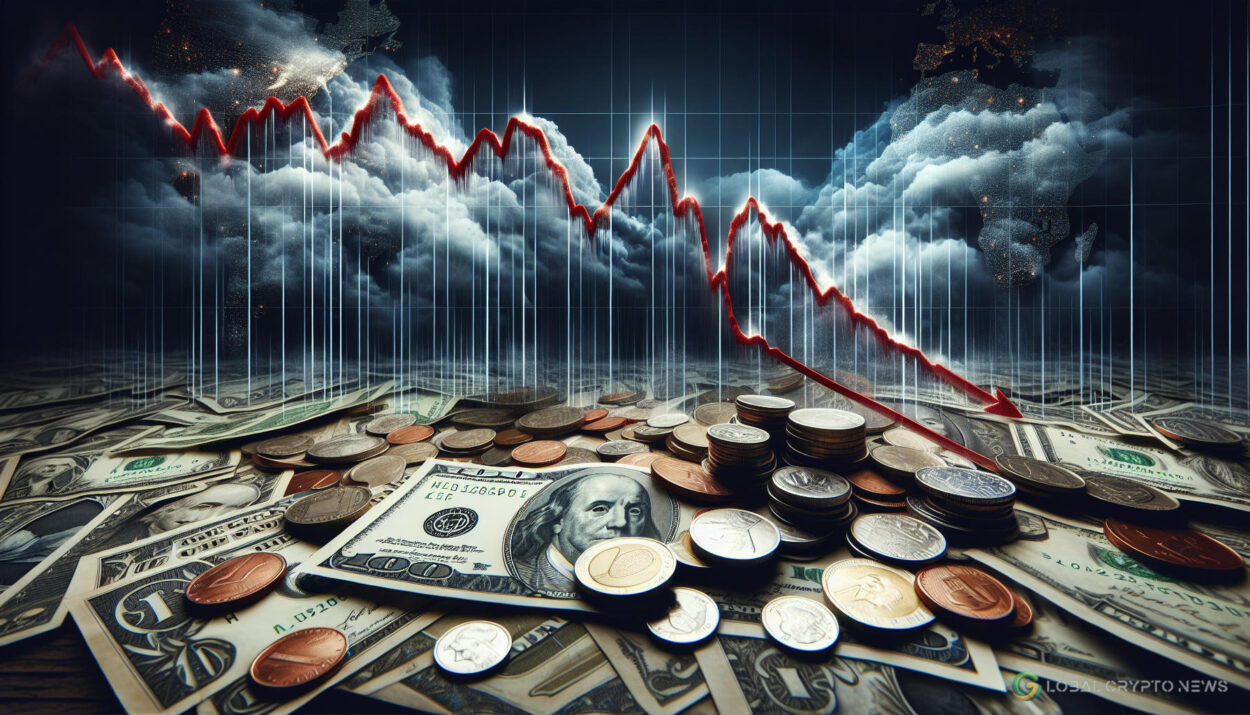Stocks Decline as Moody’s Downgrades U.S. Credit Rating
Wall Street opened the week on a negative note as major stock indices fell following Moody’s decision to downgrade the United States’ credit rating. The S&P 500 dropped 0.8% at the start of trading, while the Nasdaq Composite fell 1%, reflecting investor concerns over broader market pressures. The Dow Jones Industrial Average also saw a significant dip, losing over 200 points early in the session before buyers stepped in to stabilize the market within the first hour.
Treasury Yields Surge Amid Debt Concerns
The downgrade sparked a notable reaction in the bond market, with Treasury yields spiking across the board. The 30-year Treasury yield climbed to 5%, marking a significant level and raising concerns over the outlook for U.S. debt refinancing. If yields were to rise just nine basis points higher, it would represent an 18-year high, underscoring the uncertainty surrounding federal budget deficits and the growing burden of debt.
“The current rating aligns with the country’s debt outlook as signaled by its budget deficit and growing burden of debt refinancing,” Moody’s stated.
Impact of Moody’s Downgrade
Moody’s decision to lower the U.S.’s credit rating from Aaa to Aa1 reflects concerns about the country’s fiscal policies and economic trajectory. While the downgrade is largely symbolic, it has implications for market sentiment. RBC Capital Markets’ Head of U.S. Equity Strategy, Lori Calvasina, commented on the development:
“There’s not a ton of importance here… It’s more symbolic, but at the same time, if it’s going to push 10-year Treasury yields up, my market is going to care.”
The downgrade comes on the heels of the Federal Reserve’s decision to keep interest rates unchanged. Despite recent trade agreements with countries like China and the United Kingdom, tariff policies and political uncertainties continue to weigh on investor confidence.
Stock Market Volatility
The negative start to the week followed a strong performance in the prior week when the Nasdaq Composite surged by over 7%, and the S&P 500 gained more than 5% during a five-day winning streak. Even the Dow Jones, which faced challenges, managed to close the week up by more than 3%. However, Monday’s sell-off reflects the fragility of market sentiment in the face of rising Treasury yields and macroeconomic concerns.
Cryptocurrency Market Reaction
The cryptocurrency market also felt the ripple effects of the U.S. credit downgrade. Bitcoin experienced a significant dip, falling to lows of $102,000 after retesting highs of $107,000 on Sunday. Despite the volatility, many analysts remain optimistic about Bitcoin and the broader crypto market’s potential for further upside. Long-term sentiment continues to favor sustained growth in digital assets.
Tips for Investors Amid Market Volatility
- Stay informed: Keep track of macroeconomic developments, including interest rate policies and credit ratings.
- Diversify your portfolio: Consider a mix of stocks, bonds, and cryptocurrencies to mitigate risk.
- Focus on long-term strategies: Avoid reacting impulsively to short-term market movements.
- Monitor Treasury yields: Rising yields can signal shifts in market dynamics and impact stock performance.
While the downgrade has introduced new challenges, both traditional markets and cryptocurrencies remain areas of interest for investors looking to navigate these uncertain times. Staying informed and adopting a balanced investment strategy can help mitigate risks and capitalize on opportunities in the current financial landscape.
























